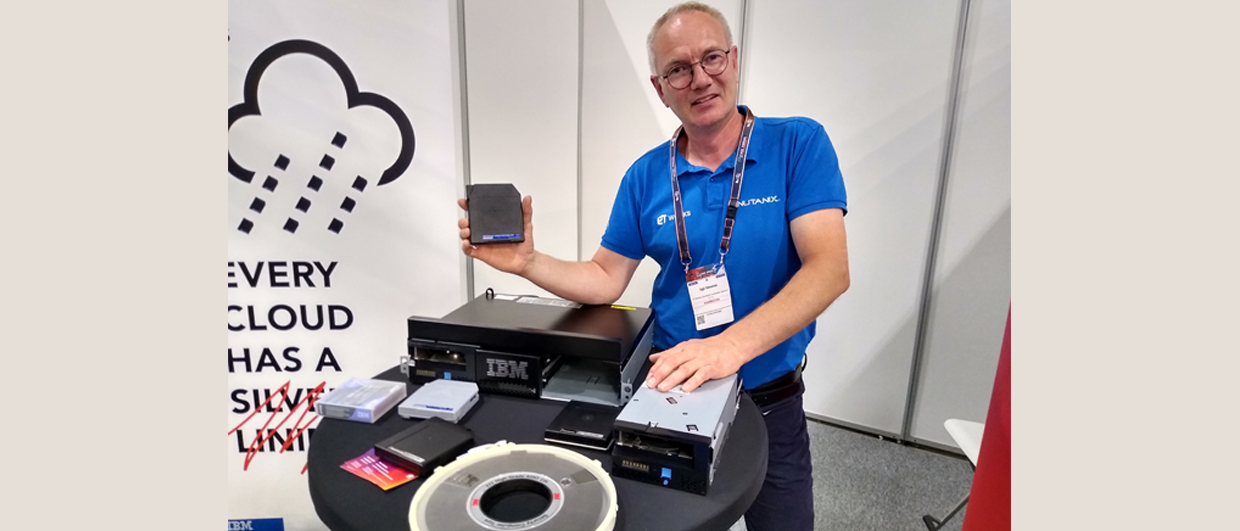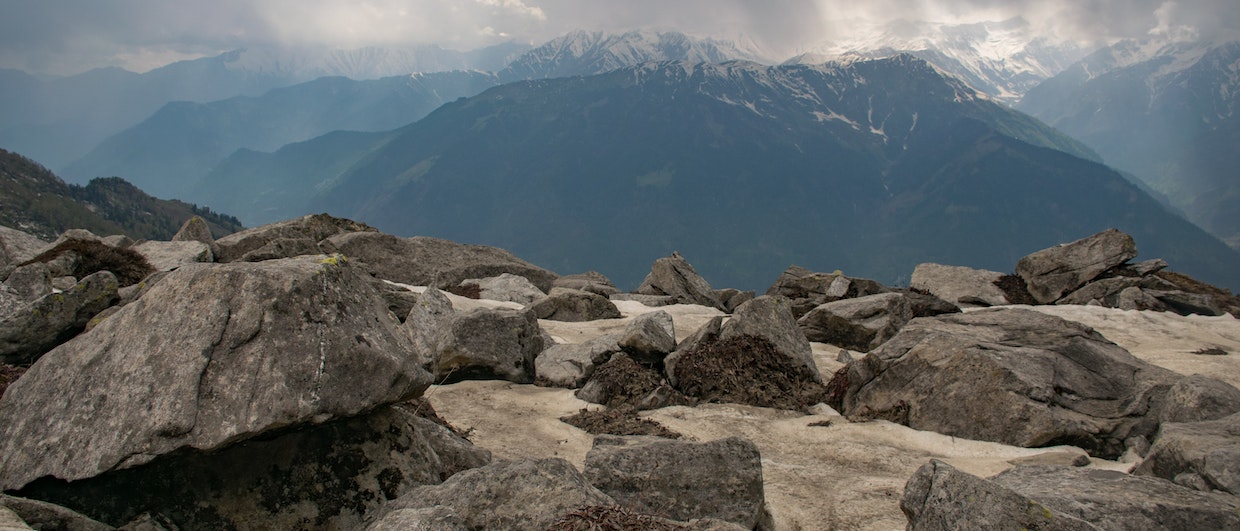The key to all seismic interpretation is the interpreter’s experience and knowledge, so why should artificial intelligence change that? The reality is, it shouldn’t.
Figure 1: Exmouth Basin section with a deep learning (machine learning) fault attribute blend. 3D network (red faults) showing the clarity and quality of fault information obtained from the process. This is fully integrated with the traditional seismic interpretation workflow, as exemplified by the blended deep learning attribute with the original seismic volume. © GeoTeric.
After a slow start, the adoption of artificial intelligence (AI) throughout the oil and gas industry is growing. Identified as the solution to many challenges across the industry, few avenues have been left unexplored to see the impact AI may have. However, AI application to the complexities of subsurface data has to date been slow.
So far, many AI proof-of-concept examples have been theoretical, presenting black box results.
As a consequence, it has been difficult to accept the results of these processes, which fail to address that the key to building an effective, accurate, and appropriate geological understanding is to ensure that the interpreter sits at the heart of the whole process – and for good reason.
Human Reasoning in Seismic Interpretation
The traditional approach of manually picking faults and horizons on sections has been used for many years and is effective for building a conceptual model of the geology and QC’ing the individual faults and overall interpretation whilst picking. This workflow can be qualitatively enhanced by incorporating seismic attributes such as structurally-oriented semblance, tensor, dip, etc. to highlight the fault structure within a seismic dataset.
Given appropriate data quality, recent developments in this area illustrate that very high-quality attributes can sometimes be generated. Such attribute-based workflows are a significant step forward in both quality and speed for fault interpretation processes; however, there are cases when standard attribute analysis disappoints. One of the enduring problems with the established attribute analysis is noise (e.g. from poor signal quality) that can be detected in the attributes. All edges are identified, often resulting in little separation between faults, processing artefacts and stratigraphic edges.
Therefore, the industry requires technology that can see past false signals which give unclear or disappointing results in traditional fault detection attribute analysis. Recent developments prove AI can be closely aligned with an interpreter’s way of working. Allowing for tightly coupled interaction as appropriate for the dataset and the individual interpreter’s workflow, an integrated deep learning environment has been created to work alongside traditional fault-picking methods. This bridges the gap between an interpreter’s understanding and expertise, placing emphasis on the interpreter via a limitless workflow.
Artificial Intelligence and Deep Learning in Seismic Interpretation
Human reasoning is influenced by experiences and lessons learned over time. As an individual’s competence grows through experience and learning, confidence in their decision-making increases.
Deep learning, also known as deep structured or hierarchical learning networks, adopts the same theory. Deep learning algorithms are inspired by biological learning of the brain; its decisions carry with it the quality and values of what created it within a network that continues to improve as the size of its data input increases.
As artificial neural networks similarly learn by example and can solve problems with diverse, unstructured and interconnected data, such qualities make deep learning an exciting technology for seismic interpretation. However, the flexibility and power of deep learning networks does have a cost, which is the amount of labeled data required to understand how to interpret seismic data.
To overcome the need for large amounts of labeled interpreted data, deep learning models can be trained with synthetic data. For example, Pochet et al. (2018) trained a 2D Convolutional Neural Network (CNN) on patches of a synthetic dataset with simple fault geometries and saw encouraging results when tested on real sections offshore Netherlands. Huang et al. (2017) proposed training a 3D CNN on fault attributes generated from synthetic seismic cubes with simple fault configurations.
However, when a CNN is evaluated on unfamiliar data with characteristics that differ from training, the accuracy tends to drop significantly. To maintain accuracy, it is often necessary to calibrate the network to the nuances of the unseen cube.
Therefore, a deep learning platform that allows real-time training with the interpreter at the heart of the process is necessary for fault, horizon or geobody interpretation.
Artificial Intelligence and Human Reasoning
One truth remains: no tool will fully replace the art of interpretation. It is the experience of the interpreter and their understanding of how the results fit into their conceptual model which makes the difference between a good or bad prospect assessment.
Part of an interpreter’s toolkit is to not only produce good quality swift interpretation but also to continue to learn from their experience and interpretation. In addition, interpreters are supported in providing an assessment of confidence for each feature, which delivers an improved assessment of risk to aid more effective exploration, appraisal, and development decision-making.
Used in combination, traditional interpretation together with deep learning techniques have the power to improve the quality, speed and understanding for the interpreter through the following methodology:
Pre-trained models: The new deep learning architecture has been developed and trained on labeled images including many fault signatures from different geological environments across varying data quality. Requiring little training for the interpreter to use the workflow, the pre-trained foundation network can be applied directly onto unseen data cubes where, if necessary, they can be calibrated to the nuances of the new environment using an interpreter-centric workflow.
Interpreter-centric AI: The first step of an integrated interpreter AI workflow is the selection of a pre-trained deep learning network. The interpreter can evaluate the accuracy of the network on any slice within a seismic cube in real time. To increase the accuracy further, fault sticks can then be automatically extracted on the AI fault attribute to allow user edits.
Continuous learning: Critically, any changes to the results made by the interpreter can be captured within deep learning training, allowing the network to learn from the interpreter’s experience and tailoring it to align with their geological expertise for deployment on future datasets.
By ingesting the clarifications from the interpreter, the results from the network not only improve, but it learns those improvements for the future. Importantly, through this interaction, interpreters can gain confidence in its output and, importantly, trust its judgement.
Testing the Method
Figure 2: Standard seismic data (a) is taken into the deep learning environment which highlights the fault network (b). Using traditional fault interpretation (if deemed necessary), the user modifies the network via real-time training (c) for subsequent 3D interpretation (d). © GeoTeric.
Entirely down to user discretion, analysis can be focused on areas of specific interest in a seismic volume or run over the complete volume. This has been tested on datasets globally, including from the Exmouth Plateau, in the Northern Carnarvon Basin, offshore north-west Australia.
Standard seismic data (Figure 2a) is brought into the deep learning environment where the interpreter can clearly see the deep learning fault network in Figure 2b. Through easy interaction with the CNN workflow, if deemed necessary the interpreter can sequentially clarify and adjust using traditional interpretation tools, adding data specific training to the CNN (Figure 2c) and modifying its behavior. Subsequently, the 3D interpretation of the fault network (Figure 2d) can be extracted and QC’d with associated confidence measures and filters. Not only does the interpreter maintain complete control of the interpretation, but the deep learning algorithm performance improves via this approach.
Applying this training method on restricted and complex layers, the comprehensive ‘out of the box’ result of the CNN is presented in Figure 3a. Detailed changes by the interpreter are then added (Figure 3b) from a different line to that interpreted, again adding data specific training to the foundation algorithm. The impact of the training is seen in (Figure 3c); such training can be applied to a stratigraphic interval (as seen here) or a complete volume.
Figure 3: ‘Out of the box’ network result highlights fault network (a). Detailed traditional fault interpretation is applied (b) which modifies the network for subsequent training and an improved output (c). © GeoTeric.
Figure 3: ‘Out of the box’ network result highlights fault network (a). Detailed traditional fault interpretation is applied (b) which modifies the network for subsequent training and an improved output (c). © GeoTeric.
Figure 3: ‘Out of the box’ network result highlights fault network (a). Detailed traditional fault interpretation is applied (b) which modifies the network for subsequent training and an improved output (c). © GeoTeric.
This limitless analysis approach proved to be significantly faster than traditional interpretation techniques, saving in the order of 80% of total interpretation time, even in cases requiring additional training of the foundation network by the interpreter.
The Key to Adoption of AI in Seismic Interpretation
Such user improvements to the foundation algorithm or to previously evolved algorithms by other users can be applied to different datasets, transferring the learning between different geological units and regions. This opens up the ability, if desired, to have workflows designed to avoid anchoring and single views of complex systems.
Soon to be released, this method captures and integrates both the deep learning CNN environment, as well as more established workflows such as CMY attribute blends.
Critically, the whole process is centered around the interpreter. The most appropriate tools can be selected for the most effective outcome when answering the questions at hand: supporting interpreters’ decision-making and, significantly, maintaining control. This entirely customizable workflow can be applied in a variety of ways, meaning if users choose to lift the lid on deep learning, not only do they have a deeper insight into the process, they can benefit from its increased speed and effectively QC its results.
Without interpreter confidence in the results, deep learning will struggle to get out of the starting blocks. Putting the interpreter at the heart of the process, as this workflow does, presents an opportunity for a deep learning environment to be adopted in the subsurface arena where its benefits can be leveraged to aid effective, accurate and appropriate understanding.
Acknowledgements
Examples presented in this article were obtained using GeoTeric™ software. The authors would like to thank Geoscience Australia for their permission to publish HCA2000A and Thebe 3D data.
References:
Axelle Pochet et al, Seismic Fault Detection Using Convolutional Neural Networks trained on Synthetic Poststacked Amplitude Maps, Monografias em Ciência da Computação n 03/2018, ISSN 0103-9741
Huang, L., X. Dong, and T. E. Clee, 2017, A scalable deep learning platform for identifying geologic features from seismic attributes: The Leading Edge, 36, 249–256.





